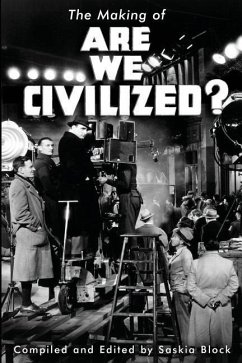Based on correspondence and images found in writer Harold Sherman's archive at the University of Central Arkansas, this book tells the story of the making and marketing of Are We Civilized?, an independently produced feature film from 1934, which portrayed the heroes and villains of world history and warned of the dangers of twentieth century dictatorships leading to further world wars. The central voice is that of Sherman, the film's ambitious young writer on his first Hollywood assignment. Back in New York he had written the screenplay and suggested accompanying producers Ed Raschbaum and Sidney T. Pink west during filming, for any additional writing and to oversee the story in an advisory capacity. In the first half, Sherman's daily letters to his wife Martha back in New York vividly describe 1930s Hollywood and his interactions with cast and crew, made up largely of individuals either on the way down from their silent-film glory days, such as director Edwin Carewe and star William Farnum, or on the way up to become Oscar winners, such as cinematographer Leon Shamroy. Optimism abounded as everyone involved in the movie-Sherman in particular-believed they were working on a milestone production that would take the nation by storm. The second half tells the story of how this obscure but curiously interesting "message film" fared in Depression-era America, when the majors dominated the industry.
Hinweis: Dieser Artikel kann nur an eine deutsche Lieferadresse ausgeliefert werden.
Hinweis: Dieser Artikel kann nur an eine deutsche Lieferadresse ausgeliefert werden.








